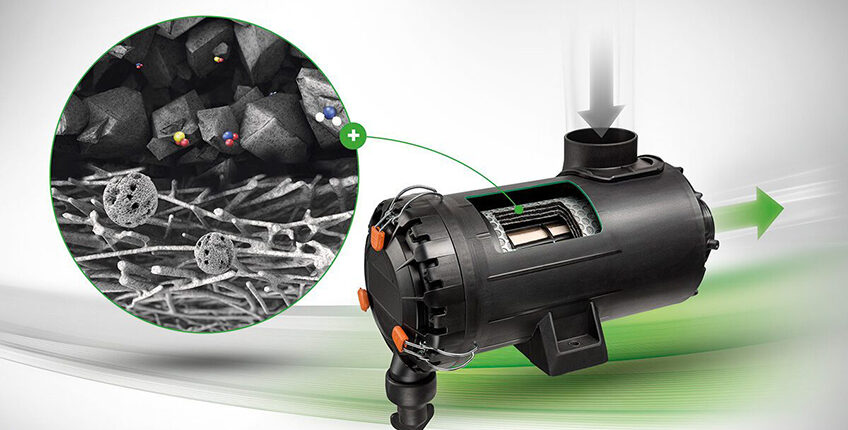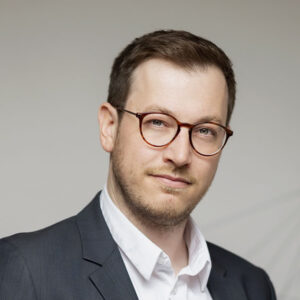The Federal Ministry for Digital and Transport is funding a consortium led by MANN+HUMMEL to develop an innovative sensor array.
Over the course of the transport transition, different types of drive are competing to be the successor of the combustion engine. Decisive criteria are performance, operational time, sustainability and last but not least, cost. While politics and industry are primarily focusing on battery-operated electric vehicles in the field of individual mobility, fuel cells are increasingly coming to the fore when it comes to commercial vehicles. Innovative air filter sensor technology from MANN+HUMMEL promises to optimise the performance-service life ratio. This development is in particular, with a view to the Chinese market.
The ISAAC project (for the development of a sensor array for pollutant gas-absorbing cathode air filter systems as part of German-Chinese collaboration) will be funded as part of the National Innovation Programme for Hydrogen and Fuel Cell Technology with a total of 840,412 euros by the Federal Ministry for Digital and Transport. The funding guideline is coordinated by NOW GmbH and implemented by Project Management Jülich (PtJ).
Problem: Pollutants in the cathode air
“The service life of a PEM fuel cell depends, among other factors, on the cleanliness of the cathode air in the catalyst”, explains Dr. Michael Harenbrock, Principal Expert Electric Mobility at MANN+HUMMEL. “Oxygen is reduced at the platinum-plated cathode, but gases containing nitrogen or sulphur also bind to the platinum particles. These block the catalyst, thereby impacting the performance of the fuel cell.”
Activated carbon filters specially adapted to such harmful gases offer effective protection, selectively absorbing them, but ultimately, they have only limited storage capacity. “Empirical values for recommended time intervals of filter changes are not available to the degree we are accustomed to for combustion engines, because the technology is brand new”, says Harenbrock. “As a result, predicting the service life of the filter remains difficult as long as we don’t know the amount of pollutant gas in real operation. Field tests in Germany show that this is dependent to a large degree on the local traffic environment.”
Filter saturation: Sensor array indicates when maintenance required
To facilitate a needs-based maintenance, MANN+HUMMEL works as part of a consortium with two other partners on a sensor array for the cathode path that will indicate saturation of the activated carbons and when pollutant gases are beginning to break through. The Duisburg Institute for Energy and Environmental Technology (IUTA) is developing a penetration sensor array based on gas-sensitive surfaces for use in cars in varying environmental conditions and an intelligent signal processing system adapted to this. The Research Institute for Precious Metals and Metal Chemistry (fem Forschungsinstitut Edelmetalle + Metallchemie) in Schwäbisch Gmünd is supplying the sensor layers, which react sensitively and selectively to specific pollutant gases or gas mixtures. “In addition to developing cathode air filter media that are specially adapted to the pollutant gas profiles, our task at MANN+HUMMEL is to integrate the array into the cathode air path”, says Harenbrock. “A prototype will emerge, that then still has to be brought to series production readiness.”
The new development is to be used primarily in fuel cell systems for commercial vehicles. “The service life requirements for commercial vehicles are considerably higher than for passenger vehicles”, explains Harenbrock. “Furthermore, the drive technology is competing with combustion engines, so the overall costs must also be economically viable. The sensor measurement technology required for this, which already can reliably determine very low gas concentrations, is now used mainly at the test benches. It is too expensive to be used in vehicles. The aim of our project is to reduce costs for the sensors while simultaneously increasing the fuel cell service life – in other words, constant performance over the greatest possible time period, enabled by predictive maintenance, i.e. a filter change at the necessary time.”
Making hydrogen the priority: Focus on the Chinese market
The purpose of government funding is to establish hydrogen and fuel cell technology competitively in the transport sector, thereby strengthening the domestic economy. That’s why collaborating with a sister project in China is of particular importance, funded by the Chinese Ministry for Science and Technology (MoST). Tongji University in Shanghai, MANN+HUMMEL China as well as an OEM partner for field trials are the partners on the Chinese side. According to Harenbrock: “Because of the different air quality, we need to first receive the relevant measurement data from China for the design for the filter elements. Ultimately, a prototype developed by us will be tested there. China is a very interesting sales market, because specifically in the field of commercial vehicles, there is an appetite for greatly expanding their hydrogen strategy.”
For more information on the project: www.now-gmbh.de/projektfinder/isaac
Image: MANN+HUMMEL cathode air filter system for commercial vehicles


